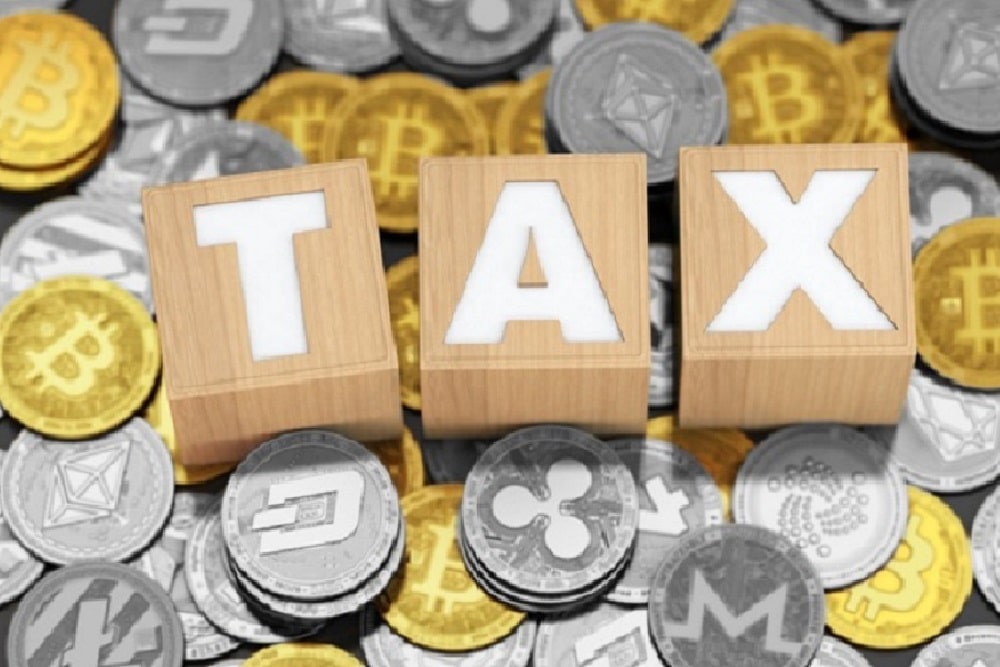Wrapped Bitcoin (WBTC) is an ERC-20 token backed by bitcoin. You can exchange it for bitcoin on a ratio of one to one (1:1). An ERC-20 token, on the other hand, is a digital asset issued on the Ethereum blockchain.
WBTC continues to top the list as the most valued wrapped token. The reason for this is not far-fetched. Wrapped bitcoin is much more than just a token.
What makes WBTC special?
This article discusses everything you need to know about wrapped bitcoin. First of all, here is a list of subtopics to be carefully explained:
- What is WBTC?
- The Need for Wrapped Bitcoin
- Who Controls WBTC?
- Parties Involved in Wrapping Bitcoin
- How to Wrap Bitcoin (Step-by-step)
- How to Use WBTC
- Where to Buy Wrapped Bitcoin
- Wrapped Bitcoin vs. Bitcoin Differences
What is Wrapped Bitcoin?
Leading projects within the decentralized finance ecosystem launched Wrapped Bitcoin in January 2019. Wrapped Bitcoin (WBTC) is an ERC-20 token representing bitcoin on the Ethereum network. Anyone can convert Wrapped bitcoin into bitcoin, and vice versa, as the value of one WBTC equals the value of one BTC.
Users can verify the amount of bitcoin sent to the WBTC address on the Bitcoin blockchain. They can also check if those transactions tally with the amount of WBTC tokens created on the Ethereum blockchain.

In addition to proof of reserves being available, users can track their conversion of wrapped bitcoin to bitcoin on the blockchain.
The Need for Wrapped Bitcoin
Bitcoin (BTC), the first and most popular digital currency, is built on the Bitcoin network. The structure of this network is different from that of Ethereum. Due to this, BTC is not compatible as a native asset on the Ethereum network.
On the other hand, wrapped cryptocurrencies generally allow investors to use digital assets on blockchains to which they are not native. Hence the need for wrapped bitcoin.
Wrapped bitcoin allows anyone to use BTC on Ethereum, a network to which it is non-native. Unlike BTC, you can trade and transfer WBTC on the Ethereum blockchain. This enables the Ethereum blockchain ecosystem to benefit from the high value and liquidity of bitcoin. Using WBTC, investors can combine the best features of both worlds.
Who Controls WBTC?
The decentralized autonomous organization (DAO), known as the WBTC DAO, controls Wrapped Bitcoin. Another critical player controlling WBTC is BitGo, an institutional-grade custodian of crypto assets. BitGo holds and stores all bitcoins sent to merchants in exchange for minting WBTC.
Parties Involved in Wrapping Bitcoin
The minting of wrapped bitcoins is a set of transactions between a merchant and a custodian. Users do not take part in this process.
Who is the Merchant?
The merchant refers to the party within the Decentralized Autonomous Organization (DAO), to which wrapped tokens are minted and burnt. Each merchant is a key player in the distribution of wrapped tokens because they act as administrators who approve the minting and burning of wrapped tokens.
The merchants launch the minting of BTC and burning of WBTC by taking care of the verification processes needed to confirm the identity of the users. The full list of WBTC Merchants at the time of writing includes the following entities:
- Kyber Network
- Republic Protocol
- Dharma
- Airswap
- Ethfinex
- Set protocol
- Prycto
What Does the Term “Custodian” Mean?
The custodian is the institution that holds the keys to mint tokens. In other words, custodians provide reliable security for the wrapped bitcoins.
It is important to note that while merchants only initiate the minting and burning processes, custodians perform the essential role of converting these digital assets.
To mint newly wrapped bitcoins, the equivalent amount of BTC is taken from the user and stored by the custodian. In the same way, when a user wants to exist WBTC, the custodian burns the tokens, and the user receives the corresponding amount of bitcoin.
As noted earlier, BitGo is the official custodian of Wrapped Bitcoin.
Who are the Users?
The ‘users’ refer to the holders of the wrapped tokens. With wrapped bitcoins, users can use bitcoin within applications built in the Ethereum ecosystem.
A Step-by-Step Guide on How to Wrap Bitcoin
There are two ways to wrap bitcoin: using a centralized exchange or directly wrapping it yourself through Wrapped Bitcoin merchants. To wrap bitcoin using a centralized exchange, you can take the six steps below:
- Create an account on an exchange like Binance (Binance supports direct conversion between BTC and WBTC).
- Deposit Bitcoin to your account.
- Go to Trade and find the WBTC/BTC pair.
- Enter the number of bitcoins to convert to WBTC and complete the trade.
- Go to Wallet and withdraw the purchased WBTC to your Ethereum address.
- Congrats! You just wrapped Bitcoin using a centralized exchange.
To directly wrap Bitcoin into Wrapped Bitcoin (only recommended for large institutional buyers), do the following:
- Contact the team of any of the officially enlisted WBTC merchants.
- Authenticate your identity by completing the verification procedure.
- Deposit bitcoin to the wallet address provided by the merchant.
- The merchant sends your bitcoin to the custodian (BitGo) and creates a request to mint WBTC.
- The merchant sends the minted WBTC to your Ethereum address.
- Finally, after a successful transaction, you now own WBTC!
Where to Buy WBTC
Wrapped bitcoin is available for purchase on some cryptocurrency exchanges. A well-known example is Binance, mentioned earlier. You can also buy Wrapped Bitcoin by swapping Ether (ETH) for WBTC on decentralized exchanges. Exchanges that support this conversion include:
- Uniswap
- Kyberswap
- Sushiswap
How to Use Wrapped Bitcoin
There are several ways to use WBTC tokens. Let us explain some of them.
- As Collateral for Crypto Loans
Decentralized Finance (DeFi) applications allow users to lend their digital currencies in exchange for interest or rewards. Similarly, users can also borrow digital assets from DeFi protocols.
To facilitate lending and borrowing, the user who intends to borrow is required to provide collateral. Usually, a certain amount of the borrower’s cryptocurrency is used as collateral until they repay the loan.
A more significant percentage of DeFi platforms live on the Ethereum network. For this reason, users could only present collateral in the form of Ether, the native cryptocurrency for Ethereum.
The problem with this arrangement is that using only one digital asset as collateral may lead to price volatility over time.
This is where WBTC comes in.
The existence of WBTC has changed borrowing and lending practices, allowing users to use a proven cryptocurrency other than ETH as collateral. Unsurprisingly, many protocols, including Compound Finance and Aave, accept wrapped bitcoin as collateral.
- Earn Interest From Loans
As explained earlier, DeFi users earn interest when they lend their digital assets, including wrapped bitcoin, to borrowers. Interest rates largely depend on the degree of demand and supply. Compound Finance and Aave are the top protocols on Ethereum for earning interest on deposited assets.
- Obtain Governance Tokens
Governance tokens allow users to hold a measure of influence over the products of a decentralized platform and how they work. Users can receive governance tokens as a reward for lending and borrowing wrapped bitcoins.
The process of accruing a governance token in addition to interest is known as liquidity mining. Again, wrapped bitcoin makes provision for bitcoin users to benefit from this opportunity.
Wrapped Bitcoin vs. Bitcoin: Are There Differences?
Is WBTC the same as BTC?
No.
Although you can exchange both at a 1:1 ratio, wrapped bitcoin is not bitcoin.
A person might wonder, too, ‘If one BTC is equal to one WBTC, what difference exists between these two assets?’
One benefit of holding wrapped bitcoin is that it enables a user to enjoy the features of the Ethereum network, including gaining access to Decentralized Finance (DeFi). Additionally, transactions made with wrapped bitcoin are quicker.
So, is there any difference between wrapped bitcoin (WBTC) and bitcoin (BTC)?
Critical Differences Between WBTC and BTC
- Wrapped bitcoin is an Ethereum-based token backed by bitcoin. Bitcoin (BTC) is a cryptocurrency built on the Bitcoin blockchain.
- While anyone can exchange WBTC on the Ethereum network, the cryptocurrency BTC can only run on the network to which it is native, Bitcoin.
- The value of wrapped bitcoin is solely dependent on the value of bitcoin because one WBTC is equal to one BTC. This implies that the value of WBTC can only increase or reduce whenever the value of bitcoin rises or falls. On the other hand, a rise or fall in the value of bitcoin largely depends on the rate of demand and supply of the cryptocurrency.
Conclusion
As the world evolves non-stop, so does technology. While many people are still contemplating whether investing in bitcoin (or cryptocurrencies, in general) is their call, wrapped bitcoin is here with us and is probably here to stay.
If, as a bitcoin holder, you intend to explore the world of DeFi, you might consider converting some of your BTC to WBTC and enjoy the best of both networks.
Tags
Bitcoin (BTC)- Crypto Price Update July 24: BTC Maintains $66K, ETH at $3.4K, XRP, TON, and ADA Rallies
- Bitcoin Falls to $65K as Mt. Gox Transfers $2.8 Billion BTC to External Wallet
- News of Marathon Digital’s $138 Million Fine for Breach of Non-Disclosure Agreement Triggers a Bearish 2.5% of Its MARA Stock
- Are $530M Bitcoin ETF Inflows a Blessing or Caution?
- Metaplanet Teams with Hoseki for Real-Time Bitcoin Holdings Verification
- Building Secure Blockchain Systems: An Exclusive Interview with ARPA and Bella Protocol CEO Felix Xu
- Building The “De-Facto Crypto Trading Terminal”: An Exclusive Interview with Aurox CEO Giorgi Khazaradze
- Building a New Global Financial System: An Exclusive Interview With Tyler Wallace, Analytics Head at TrustToken
- “Solana is the Promised Land for Blockchain” — An Exclusive Interview with Solend Founder Rooter
- El Salvador: Where The Bitcoin Revolution Begins With A Legal Tender

 Why Trust Us
Why Trust Us







